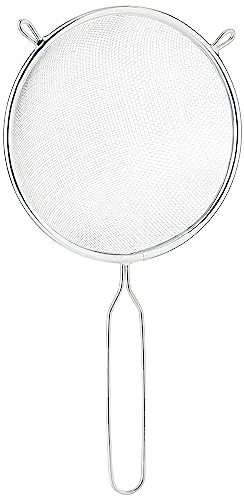Understanding the Basics of a Sieve
A sieve, also known as a strainer or a screen, is a tool used in various industries and everyday life to separate or filter solids from liquids or to separate different sizes of particles. It works by passing a mixture through a mesh or perforated surface, allowing smaller particles to pass through while retaining larger ones.
Design and Construction of a Sieve
A sieve typically consists of a frame and a mesh or perforated surface. The frame is usually made of metal or plastic and provides structural support for the sieve. The mesh or perforated surface is attached to the frame and acts as the filtering medium. The size and shape of the holes in the mesh or perforated surface determine the size and shape of the particles that can pass through.
The mesh or perforated surface can be made from a variety of materials, including stainless steel, brass, nylon, or polyester. The choice of material depends on the application and the type of particles being filtered. For example, a fine mesh made of stainless steel may be used in laboratory settings to filter small particles, while a larger perforated surface made of plastic may be used in the food industry to strain out larger particles.
The Mechanism of Sieving
When a mixture is poured into a sieve, gravity and mechanical agitation are often used to encourage the separation process. The smaller particles and liquid pass through the holes in the mesh or perforated surface and are collected or directed to another container. The larger particles are retained on the surface of the sieve and can be collected separately.
In some cases, the size of the particles being separated is crucial. The diameter of the holes in the mesh or the size of the perforations determines the particle size that can pass through. This allows for fine control over the separation process, as sieves with different mesh sizes can be used to filter particles of varying sizes.
Applications of Sieves
Sieves are used in a wide range of industries and applications. In the pharmaceutical industry, sieves are used to separate powders and granules, ensuring that the correct particle size is used in medicine formulations. In the food industry, sieves are used to strain out impurities or to separate different ingredients. For example, flour may be sifted through a sieve to remove lumps or foreign objects.
In the construction industry, sieves are used to determine the particle size distribution of aggregates, such as sand or gravel, which is important for the design of concrete mixes. In environmental science, sieves are used to analyze soil samples and determine the composition and size distribution of the particles present. Sieves are also commonly used in laboratories for various scientific and research purposes.
Cleaning and Maintenance of Sieves
Proper cleaning and maintenance of sieves are essential to ensure their longevity and optimal performance. After each use, sieves should be cleaned thoroughly to remove any particles or residues that may clog the mesh or perforated surface. This can be done by rinsing the sieve with water or using a brush or scraper to remove stubborn particles.
Sieves should be stored in a clean and dry location to prevent corrosion or damage. If the mesh or perforated surface becomes damaged or clogged over time, it may need to be replaced to maintain the efficiency of the sieve. Regular inspection of the sieve and maintenance practices will help extend its lifespan and ensure accurate and reliable filtration or separation.






